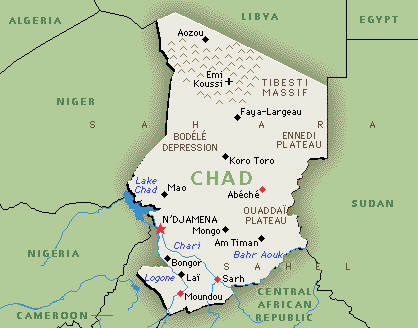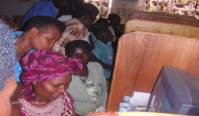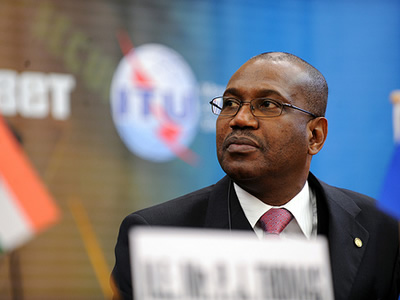
US-Africa Summit
Since the field of information and communication technology for development (ICT4D) has been cautioned not be a standalone sector but rather integrated into the existing areas of development, successful projects have seen a number of collaborations among development partners. The recently ended 8th Biennial U.S.-Africa Business Summit organized by the Corporate Council on Africa (CCA) in Washington, DC epitomized such collaborations.
One of the workshops at the summit on “Talking to the Future: Bringing Global Broadband to the Doorsteps”, brought together panelists from the World Bank, Microsoft, SEACOM, the Island of Tenerife, and the Nigerian Identity Management Commission to discuss efforts that are being put in place to deliver broadband Internet to remote communities. Areas covered include infrastructure development such as data centers, fiber optic cables and Internet exchange points; regulatory environment; identity management to ensure safe use of the Internet; innovative technologies and their applications in education, health, agriculture, and other sectors; and local content development that includes Africans themselves.

Image Credit: GBI
The discussion took off with an intellectual introduction from the moderator – the immediate past CEO of Commonwealth Telecommunications Organization (CTO), Dr. Ekwow-Spio Garbrah using the acronym “PROFIT” to describe the broadband Internet environment. A sound Policy environment to ensure availability and accessibility to the net; the Regulatory environment by national countries to allow for free and fair competitive market; a smooth Operating environment by the companies; the Funding or Financing of broadband to accelerate infrastructure development; development of the physical Infrastructure itself; and the Technologies associated with the infrastructure for effective functioning. This opened the ground for each panelist to fit their areas of operation into one or more of these “PROFIT” areas.
The World Bank
The presentation by Mr. Doyle Gallegos from the World Bank seems to cover almost all the areas of broadband deployment under the ‘PROFIT’ acronym. According to the Bank, ICTs are the most significant tools that can be used to fight poverty right now and the bank is doing everything possible to deliver low-cost value added service to the population. The bank’s primary role is to provide finances for infrastructure but at the same time, it gives technical assistance to governments to promote right enabling environment, assists its clients to create legislation, right national ICTs policies, and right regulations in order to promote private sector development. Over the last 5 years, the World Bank has invested an amount of USD 700 billion into the ICT sector through private investment guarantees and ICT is one of the best performing sectors in the World Bank Group’s portfolio, both in terms of returns and development impact
The bank is also ensuring that people learn how to use the ICTs, and how to use digital computers. Also in the area of infrastructure sharing through open access, lowering the cost of use of these technologies to ensure the access to broadband, open access legislation, and pricing mechanisms. The World Bank is also concern with the issues of spectrum management and considers it as a biggest potential problem in the growing area of data communications, and data traffic in the future. It is therefore doing everything possible to ensure that spectrum become available to entrepreneurs, mobile operators, new emerging operations that we haven’t seen through simple sharing blocks. It is also involved in innovative Public-Private-Partnership (PPP) to invest in regional networks in Africa – East, West, Central Africa, etc.
Mr Gallegos stated that national governments in Africa have to open up and partner with private businesses. Other areas touched by the speaker include data centers, IXP, e-legislation, – e-commerce, e-documents, m-banking, etc. It concluded that a lot have been done but the bank still need to put in more.
SEACOM
Mr Brian Herlihy from SEACOM – a privately owned and operated pan-African ICT enabled company that is driving the development of the African Internet also emphasized the company’s efforts in infrastructure development projects in East Africa that is being replicated in West Africa through the development of the fiber optic cables. The company is also involved in a number of innovative commercial solutions to exploit other commercial relationships. SEACOM is known to have financed and developed the first broadband submarine cable system along the eastern and southern African coastlines, bringing with it a vast supply of high quality and affordable Internet.
The Island of Tenerife
Mr. Carlos Alonso Rodríguez, the Vice President of the Island of Tenerife – the largest and most populous island of the seven Canary Islands, agreed with the previous speakers about the fact that mobile Internet services may not be the answer to Africa and other developing nations even though it is having significant impact across. As a result, the government of Tenerife is investing in infrastructure development through fiber optic cables and data centers.
The Island is also using a publicly funded approach to developing the state of the art data centers across the country, a model that the representative argued, could be used in the continent of Africa and the Latin American countries. This approach brings the issue about the pros and cons of publicly funded infrastructure projects in the ICT sector in the developing nation. In order to benefit from these investments, the Island is also investing in the services sector through the use of e-education, e-governance, among others to benefit the ordinary people and to be able to generate revenue from the investment.
Through the ALiX Project, Tenerife is expected to enhance its competitiveness in the global telecommunications market. The project will become a Neutral Access Point for West Africa and the Canary Islands, developing cable connectivity between new and existing African and Latin American submarine cables and creating the southern gateway to Europe for telecommunications.
Nigerian Identity Management Commission (NIMC)
Mr Chris E. Onyemenam, the Director General of Nigerian Identity Management Commission (NIMC) narrated the country’s experience in terms of the application of ICTs – that is the content for development. He recounted the weak experience of Nigeria in the ICTs sector for some years back but through the leadership of the former military leader, General Olusegun Obasanjo, Nigeria has made remarkable progress through the development of national telecommunication policies and the focus on ICTs. He argues that the Internet communication is till low in Nigeria with the mobile sector moving very fast and efforts are in place to “leapfrog”.
In order to leverage on the mobile and broadband Internet penetration in the country for positive impact on the various sectors, the national identification efforts was introduced in 2007 across government agencies to optimize the use of the scarce resources. Prior to NIMC, the various identification schemes, including the database and issuance of identification cards both in private and public sectors, resided with the respective organizations. There has been no unique set of principles, practices, policies, processes and procedures that are used to realize the desired outcomes related to identity.
The NIMC program started with the registration of all citizens of Nigeria who at the commencement of the Act have attained or who thereafter attain the age of 18, and issuance of a National Identity Card (NIC). This was aimed at controlling illegal immigrations to the country, validation of other civic documents like passports, setting up a reliable personal identification system for the purpose of secure commercial transactions with financial institutions, etc.
Instead of waiting till 18 years, the NIMC is in the process of registering Nigerian at birth to address issues such as fraud and multiple identities. At the moment, the national identification database is being established and will be maintained and managed by Nigerians. Other steps that are being taken include, assignment and issuance of a unique National Identification Number to individuals who have been registered, introduction and issuance of General Multipurpose Cards, undertaking of data harmonization, administration and provision of secure connectivity to existing systems, and provision of card acceptance devices and other identity services alone or in partnership with third parties.
With the issues of ‘419’ in Nigeria i.e. identity fraud, theft issues, and misrepresentations, the system is designed and based on the assumption that ‘if you cannot stop them from illegally acquiring the passport, then you can manage the process”. And this is being done through the registration and issuing of ID for legal residents and at birth. This will make it difficult for individuals to engage in future fraud activities.
Microsoft
Dorothy Dwoskin, Senior Trade Policy Director from Microsoft stated that, as a technology developing company – hardware and software, the company believes that technology could act as an engine of growth and development. The company believes that access to market is great but we also need the goods and services to be able to get to the market. As a result, the company has a priority to make the good and services get to the final consumer across the finished line. Microsoft works with local entrepreneurs to ensure market through business information centers, and digital literacy.
Microsoft is also working with AECOM on a USAID program to help find some very important solution to simple problems that ultimately facilitate trade. AECOM has been implementing the Trade Facilitation and Capacity Building Project in a number of African countries including Malawi, Namibia, and South Africa to effectively manage the Southern Africa Trade Hub that was established to assist Southern African businesses to take greater advantage of the global trade initiatives. The Hub is designed to function as a central point where local enterprises can gain access to US markets through business linkages, capacity building services, and problem-solving trade facilitation.
At the moment custom information and data has to be entered manually at each post or each country thereby giving chances for fraud and delay in the clearance process as good and services are traded between countries. It is believed that a days’ delay in goods and services from one country to another has a negative impact on the overall GDP of the country. But at the moment with the manual custom clearance activities, Botswana has about 28 days of delay, Namibia has around 29 days delay, and South Africa has 30 days for clearing goods and services at the customs.
“So if we can automate the activities of custom and clearing agencies, it will be good for business and trade for governments by increasing competitiveness and revenue stream of companies and governments,” Said Ms Dwoskin. Automating information to reduce these long days of clearing goods and services at these ports will facilitate trade. Microsoft is therefore helping to create a single unified approach so that transactions between these countries is automated so that by the time the good moves from one country to another, the information/data entered at one points is already available at the other end. Connecting all computers so that once the data is entered at one point, information is shared among all others on the network.
According to Ms. Dwoskin, Microsoft is also concern with local content and therefore ensuring local software development in wherever it goes, and in Africa the company has strong base by using the local people to develop local content or local software that are relevant to Africa’s economy.
Other questions and responses led to the “5As” acronym of broadband Internet namely Access; Affordability; Availability; Adoptability; and Adaptability. Also in terms of relevant content with broadband utilization, instead of ‘3G’ which some refer to as ‘Girls, Games and Gambling’, Africa needs ‘4Es’ – Employment; Empowerment; Education; and Enterprise.
In all, the discussion centered around various ways of innovating upon traditional broadband capabilities in order to aid in the development of growing markets, the possibility of introducing e-commerce solutions for micro-financed businesses, and the feasibility of streamlining/optimizing regulatory frameworks to work in favor of spectrum coordination in times when rapid deployment and cross-border mobile and wireless communication may be needed to deal with emergency situations.
Broadband in itself is not a business, and therefore investing in broadband requires that services and applications are implemented after building the infrastructure.
 Of late, the North Central African nation of Chad (Tchad) has remained out of the international spotlight. Chad has also been on the periphery of the African tech scene. Libya and Sudan, neighbors to the north and east, respectively, have “stolen” much of the African news. And that is not necessarily a bad thing – life in Chad is seemingly stable. However, it is going to take more than status quo to improve the quality of life in Chad.
Of late, the North Central African nation of Chad (Tchad) has remained out of the international spotlight. Chad has also been on the periphery of the African tech scene. Libya and Sudan, neighbors to the north and east, respectively, have “stolen” much of the African news. And that is not necessarily a bad thing – life in Chad is seemingly stable. However, it is going to take more than status quo to improve the quality of life in Chad.![]()







 Despite efforts over the past several years, to bring ICTs to rural areas of Uganda, assessments show most of these initiatives have been dominated by men. In the Rwenzori Region of Western Uganda, Toro Development Network (ToroDev) works to make sure women have access to this connectivity as well. More gender sensitive intervention is needed to enable the local population generate and exchange reliable information in a relevant local content on their own, enhance gender advocacy and sensitization programmes that target to improve the status of women and share knowledge by building an electronic community and networks, especially in the agricultural and agro-business sector. Over 80% rural women depend on small-scale agriculture and agro-business sector in the region.
Despite efforts over the past several years, to bring ICTs to rural areas of Uganda, assessments show most of these initiatives have been dominated by men. In the Rwenzori Region of Western Uganda, Toro Development Network (ToroDev) works to make sure women have access to this connectivity as well. More gender sensitive intervention is needed to enable the local population generate and exchange reliable information in a relevant local content on their own, enhance gender advocacy and sensitization programmes that target to improve the status of women and share knowledge by building an electronic community and networks, especially in the agricultural and agro-business sector. Over 80% rural women depend on small-scale agriculture and agro-business sector in the region.




































